Karen Lamassonne
Ruido / Noise
25 Feb - 14 May 2023
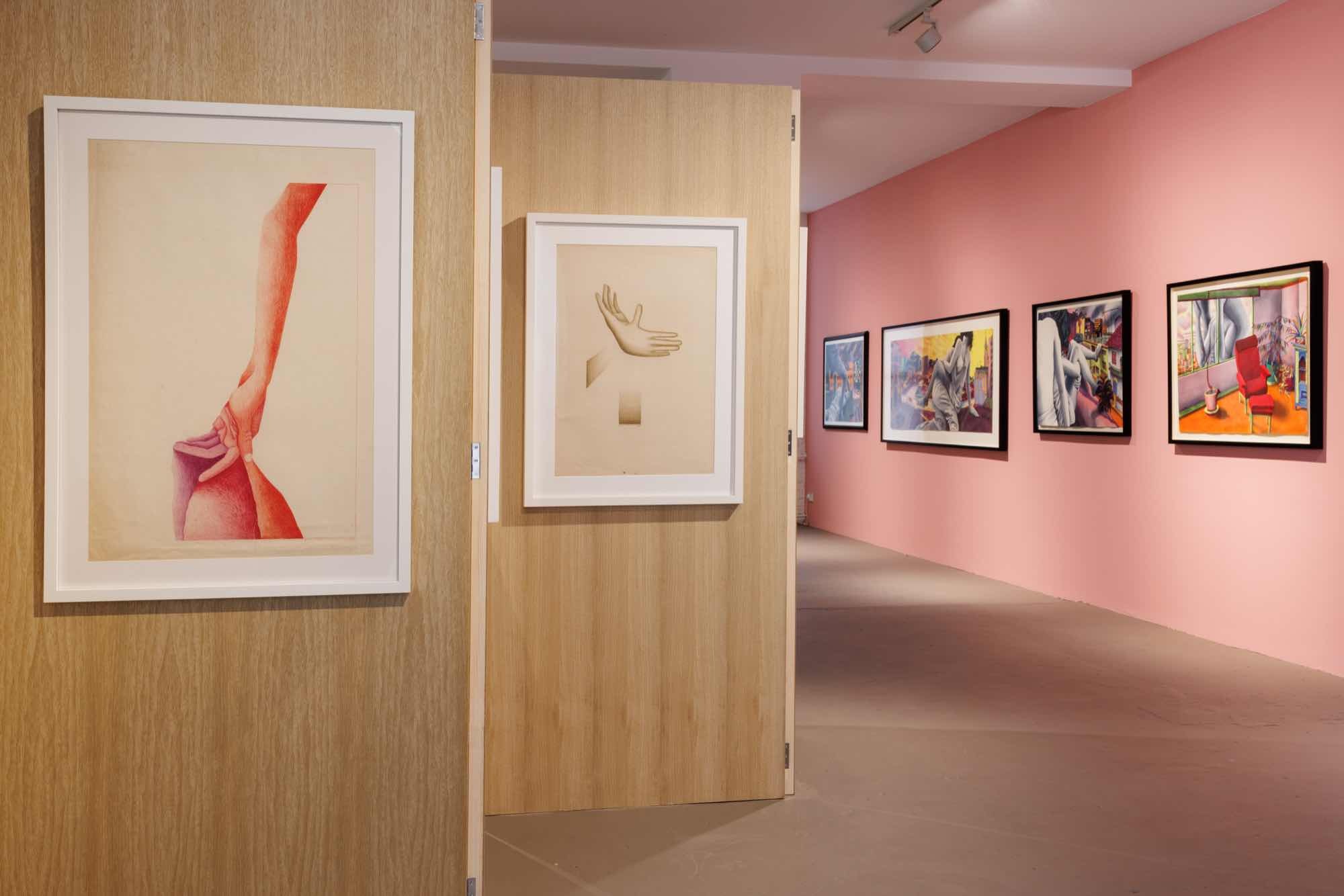
Installation view of the exhibition Karen Lamassonne – Ruido / Noise at KW Institute for Contemporary Art, Berlin 2023; Photo: Frank Sperling

Karen Lamassonne, Baño (Bathroom) series, 1979. Watercolor © Karen Lamassonne. Installation view of the exhibition Karen Lamassonne – Ruido / Noise at KW Institute for Contemporary Art, Berlin 2023; Photo: Frank Sperling.
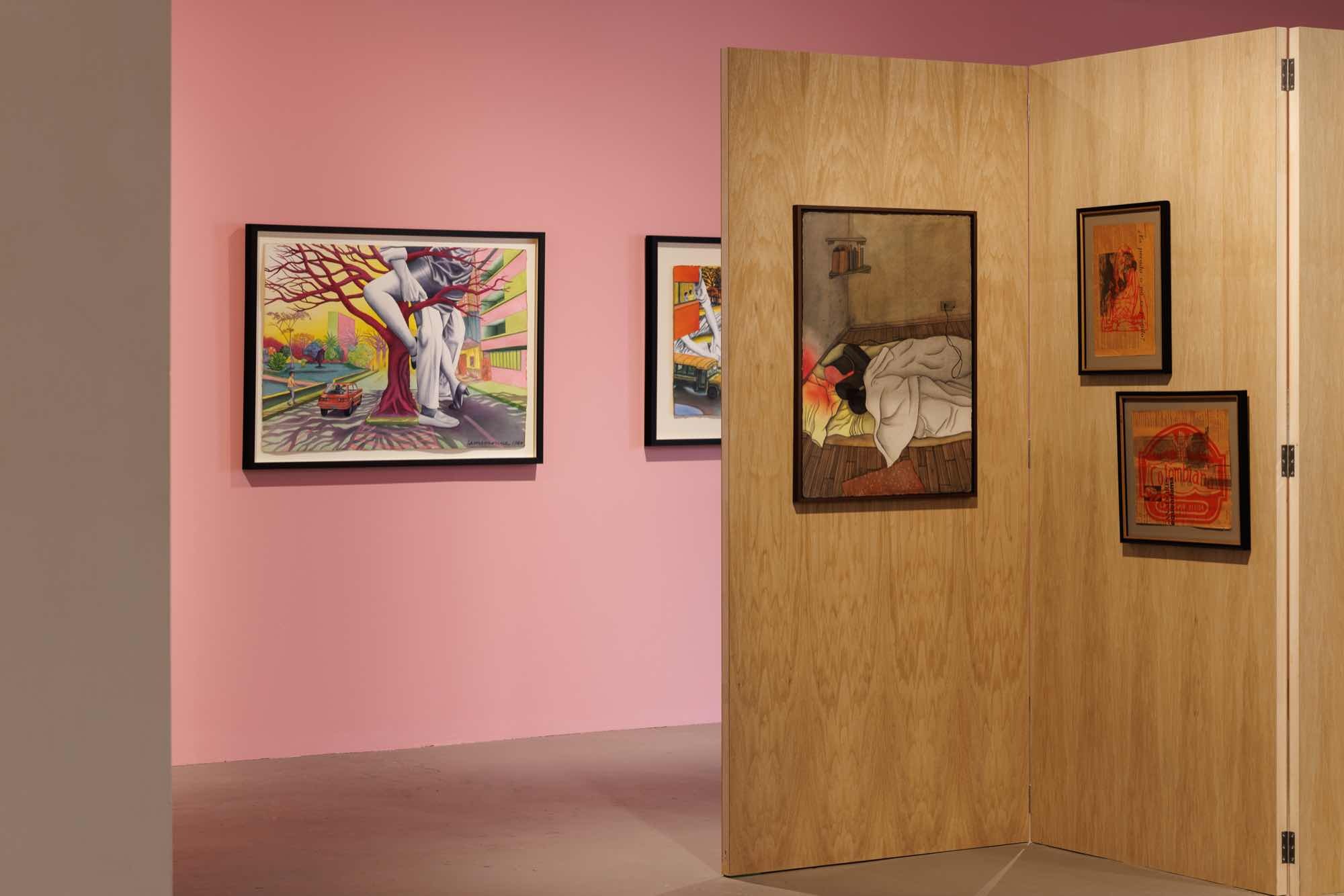
Installation view of the exhibition Karen Lamassonne – Ruido / Noise at KW Institute for Contemporary Art, Berlin 2023; Photo: Frank Sperling

Installation view of the exhibition Karen Lamassonne – Ruido / Noise at KW Institute for Contemporary Art, Berlin 2023; Photo: Frank Sperling
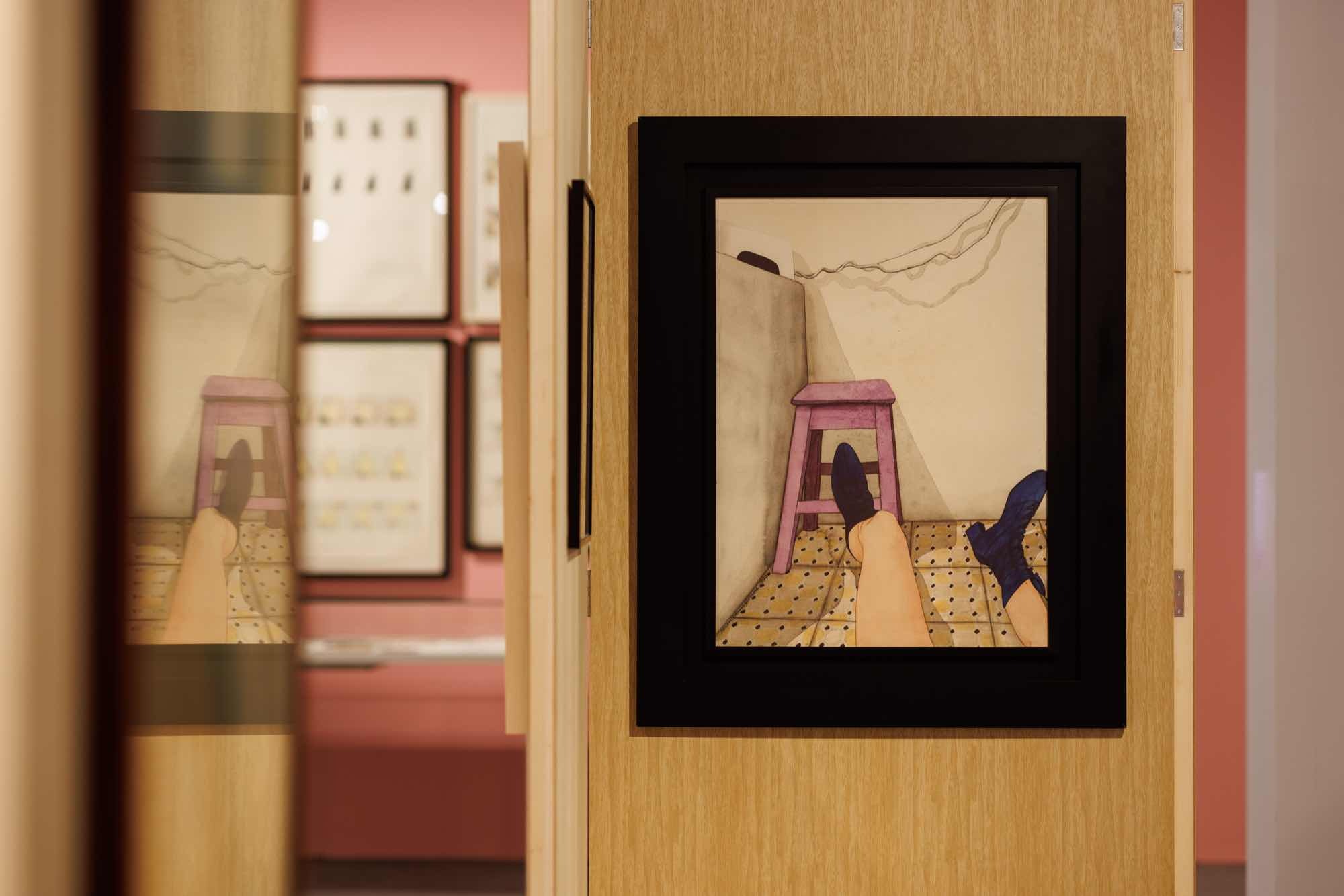
Karen Lamassonne, Botas Azules, (Blue Suede Boots), 1977. Watercolor © Karen Lamassonne. Installation view of the exhibition Karen Lamassonne – Ruido / Noise at KW Institute for Contemporary Art, Berlin 2023; Photo: Frank Sperling.
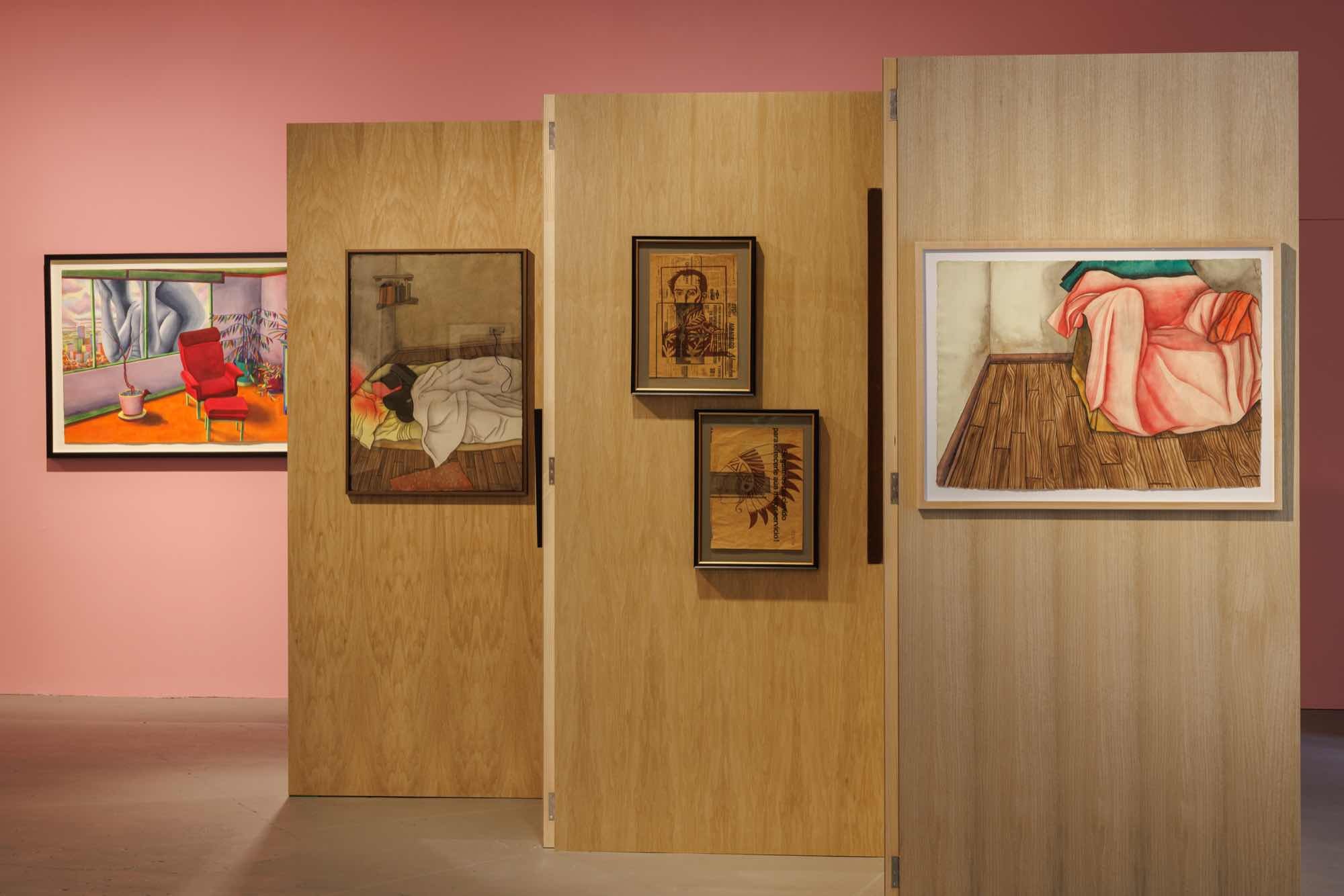
Installation view of the exhibition Karen Lamassonne – Ruido / Noise at KW Institute for Contemporary Art, Berlin 2023; Photo: Frank Sperling
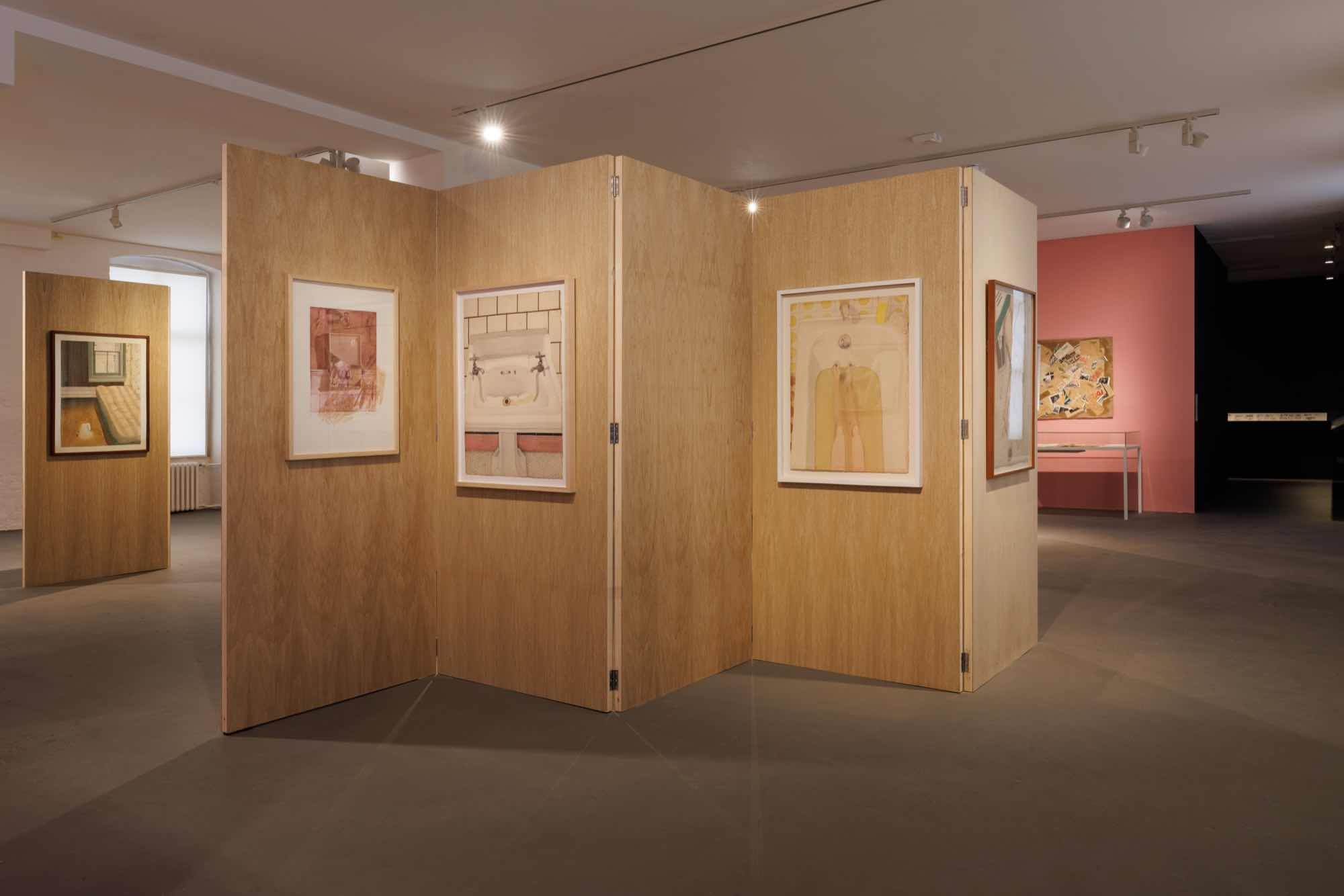
Installation view of the exhibition Karen Lamassonne – Ruido / Noise at KW Institute for Contemporary Art, Berlin 2023; Photo: Frank Sperling
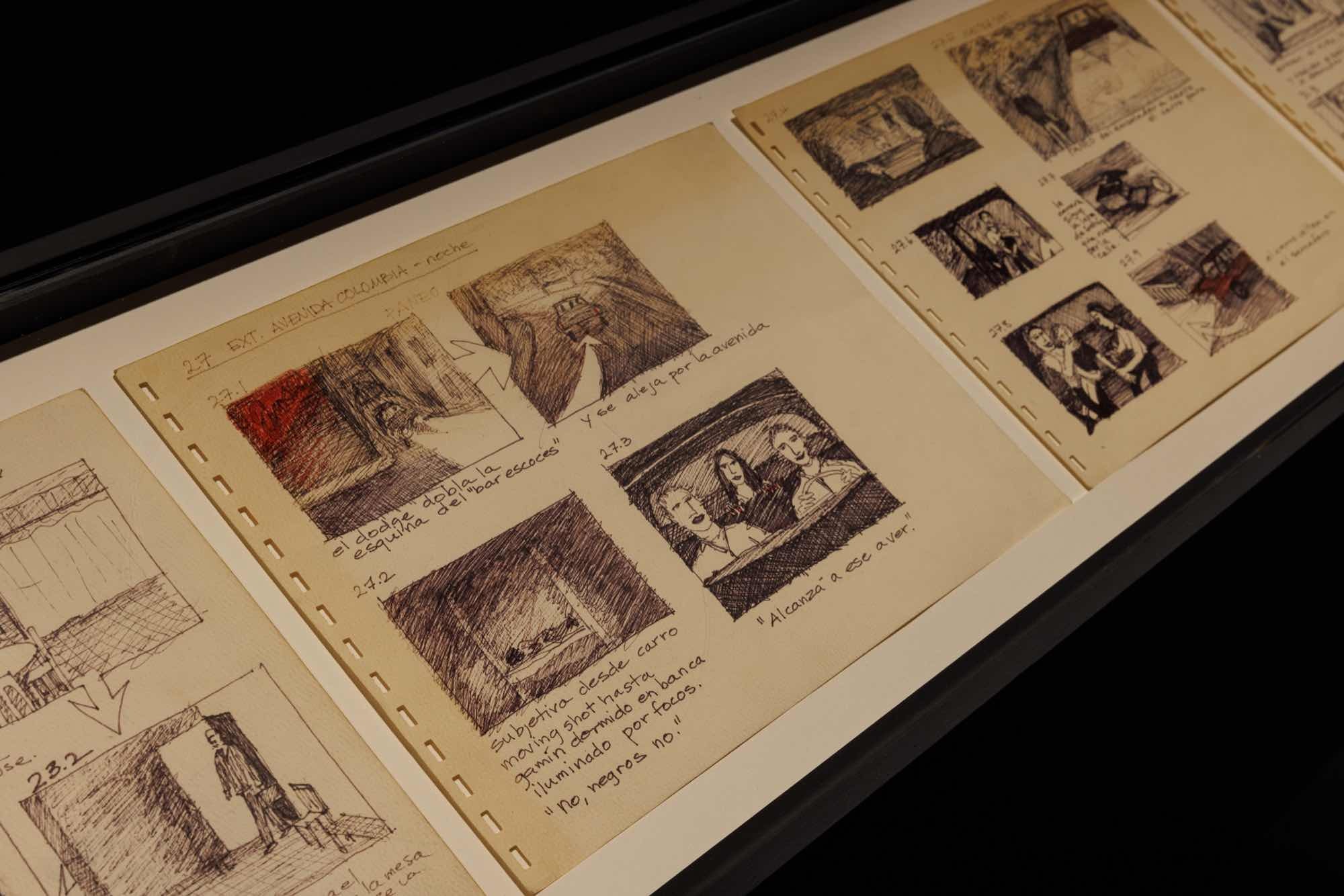
Karen Lamassonne, Selections from the storyboard for Pura Sangre (Pure Blood), 1982, Black and red ink © Karen Lamassonne. Installation view of the exhibition Karen Lamassonne – Ruido / Noise at KW Institute for Contemporary Art, Berlin 2023; Photo: Frank Sperling.

Karen Lamassonne, Ruido (Noise), 1984–2021, Installation with five paintings, acrylic on paper; five TV monitors; digitized 1⁄2 inch VHS video, color and sound, 12:40 min Courtesy the artist © Karen Lamassonne. Installation view of the exhibition Karen Lamassonne – Ruido / Noise at KW Institute for Contemporary Art, Berlin 2023; Photo: Frank Sperling.

Karen Lamassonne, Ruido (Noise), 1984–2021, Installation with five paintings, acrylic on paper; five TV monitors; digitized 1⁄2 inch VHS video, color and sound, 12:40 min Courtesy the artist © Karen Lamassonne. Installation view of the exhibition Karen Lamassonne – Ruido / Noise at KW Institute for Contemporary Art, Berlin 2023; Photo: Frank Sperling.
Ruido / Noise is the first solo exhibition by the Colombian-American artist Karen Lamassonne (b. 1954, US) in Europe and is collaboratively presented with Swiss Institute, New York, and Medellín Museum of Modern Art – MAMM. The exhibition brings together paintings, drawings, collages as well as videos that Lamassonne created between 1974 and today.
Many works of Lamassonne, like her early watercolor series entitled Baños (Bathrooms, 1978-81), are often situated in domestic spaces like bathrooms, bedrooms, kitchens, and hallways. As a woman, she playfully questions notions of self-portraiture and self-representation by concealing and revealing the self. Lamassonne has tended to describe these paintings as self-portraits, though the figure is usually anonymized shown only from the shoulders down or from the back.
In 1984, Lamassonne conceived Ruido (Noise), which has been realized for the first time on the occasion of the traveling exhibition. Television screens displaying ‘noise’ are used to light several paintings installed around them, each depicting a part of a woman’s body illuminated by the glow of the screen.
In the 1970s and 1980s, Lamassonne became closely connected to the Grupo de Cali (Cali Group), a group of filmmakers who heralded the New Latin American Cinema and had a lasting influence on cinema production. Among many other capacities, Lamassonne was responsible for the art direction for Pura Sangre (1982), directed by Luis Ospina, and the German-Colombian production Kalt in Kolumbien (1985), directed by Dieter Schidor. On view are selected scenes from Lamassonne’s storyboard for Pura Sangre, a horror thriller centering on a rich sugar magnate who survives on the fresh blood of murder victims.
In later works, like the Homenaje a Cali (Hommage to Cali) series (1989), Lamassonne would move towards depicting the tension between the intimacy of sensual and sexual bodies in public urban spaces. This series reflects the importance of the cinematic to her practice, whilst recalling earlier works in which bodies were drawn into landscapes.
In 2019, the artist began revisiting her collection of postcards and, during the lockdowns in 2020, extending the imagery on the front of the cards in surreal directions. Similarly, she began creating drawings and sculptures of “hairy” or “monster” hands. These resemble props or costumes from movies that Lamassonne might have worked on in the past.
Curator: Krist Gruijthuijsen
Many works of Lamassonne, like her early watercolor series entitled Baños (Bathrooms, 1978-81), are often situated in domestic spaces like bathrooms, bedrooms, kitchens, and hallways. As a woman, she playfully questions notions of self-portraiture and self-representation by concealing and revealing the self. Lamassonne has tended to describe these paintings as self-portraits, though the figure is usually anonymized shown only from the shoulders down or from the back.
In 1984, Lamassonne conceived Ruido (Noise), which has been realized for the first time on the occasion of the traveling exhibition. Television screens displaying ‘noise’ are used to light several paintings installed around them, each depicting a part of a woman’s body illuminated by the glow of the screen.
In the 1970s and 1980s, Lamassonne became closely connected to the Grupo de Cali (Cali Group), a group of filmmakers who heralded the New Latin American Cinema and had a lasting influence on cinema production. Among many other capacities, Lamassonne was responsible for the art direction for Pura Sangre (1982), directed by Luis Ospina, and the German-Colombian production Kalt in Kolumbien (1985), directed by Dieter Schidor. On view are selected scenes from Lamassonne’s storyboard for Pura Sangre, a horror thriller centering on a rich sugar magnate who survives on the fresh blood of murder victims.
In later works, like the Homenaje a Cali (Hommage to Cali) series (1989), Lamassonne would move towards depicting the tension between the intimacy of sensual and sexual bodies in public urban spaces. This series reflects the importance of the cinematic to her practice, whilst recalling earlier works in which bodies were drawn into landscapes.
In 2019, the artist began revisiting her collection of postcards and, during the lockdowns in 2020, extending the imagery on the front of the cards in surreal directions. Similarly, she began creating drawings and sculptures of “hairy” or “monster” hands. These resemble props or costumes from movies that Lamassonne might have worked on in the past.
Curator: Krist Gruijthuijsen
